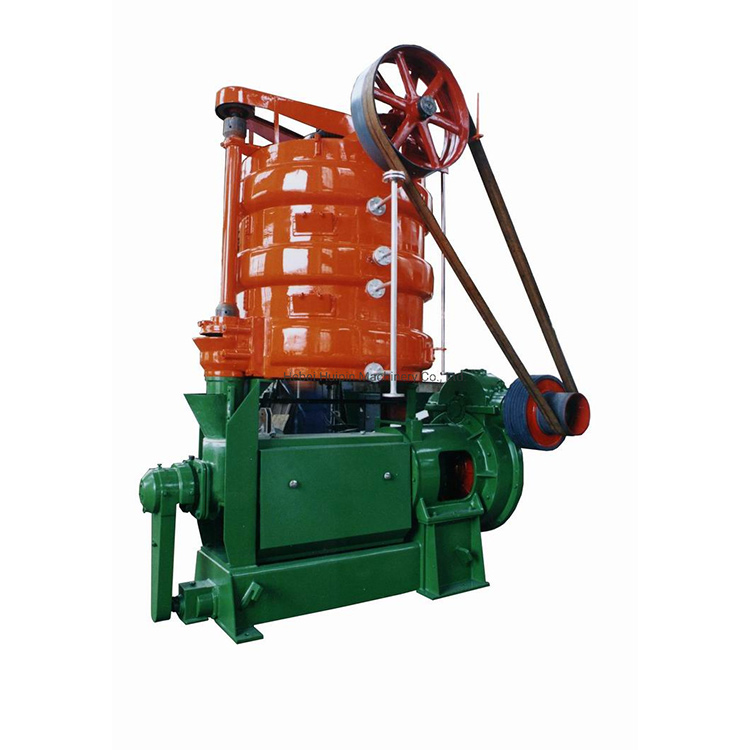Dec . 12, 2024 09:58 Back to list
pressing shaft of oil press service
Understanding the Pressing Shaft of Oil Press Machines
The oil press machine is a vital piece of equipment in the agricultural and food industry, specifically designed to extract oil from seeds, nuts, and other oil-containing materials. One of the most important components of an oil press machine is the pressing shaft. This article delves into the function, design, and importance of the pressing shaft within the oil extraction process.
What is the Pressing Shaft?
The pressing shaft is a cylindrical rod that plays a crucial role in the oil extraction process. It is equipped with specially designed helical grooves or threads that allow for the efficient squeezing of oil from seeds. The pressing shaft operates within a cylindrical chamber, often referred to as the pressing chamber, where the raw materials are fed into the machine. The shaft rotates and generates pressure, consequently extracting oil while leaving behind the solid residues known as oil cake.
The Function of the Pressing Shaft
The primary function of the pressing shaft is to generate pressure on the feed material as it moves through the pressing chamber. This is achieved through the rotational movement of the shaft, which pushes the seeds against the chamber walls and other components. As the seeds are compressed, the oil contained within them is released and flows out through openings in the pressing chamber.
1. Mechanical Pressure Generation The pressing shaft delivers mechanical pressure to the seeds, triggering the oil extraction process. By increasing the pressure, the oil can be efficiently separated from the solid materials.
2. Heat Generation The friction between the pressing shaft, the seeds, and the chamber walls generates heat, which further aids in the oil extraction process. The heat helps to soften the seeds, making the oil extraction more efficient.
3. Continuous Feed Processing Many modern oil presses are designed for continuous operation. The pressing shaft allows for constant feeding of seeds into the chamber, making the process more efficient and productive, compared to traditional batch processes.
Design and Materials
The design of the pressing shaft is crucial for the efficiency and durability of an oil press machine. Typically, pressing shafts are made from high-quality steel or alloy materials, which undergo specific treatment to enhance their hardness and wear resistance. The design often includes
pressing shaft of oil press service

- Helical Grooves These grooves are essential for guiding the seeds through the chamber and ensuring uniform pressure application
.- Diameter and Length The dimensions of the pressing shaft vary depending on the machine size and the type of seeds being processed. A larger shaft diameter can handle more feed material, while a longer shaft can provide more pressing space.
- Surface Finish The shaft's surface is usually smooth to reduce friction and enhance the efficiency of oil flow during extraction.
Importance of the Pressing Shaft in Oil Extraction
The pressing shaft is fundamental to the oil extraction process for several reasons
1. Efficiency A well-designed pressing shaft significantly improves the efficiency of oil extraction. The geometric design influences the amount of pressure applied and the resultant oil yield.
2. Quality of Oil The quality of oil extracted is often influenced by the design and operation of the pressing shaft. Proper heating and pressure application can help to preserve the nutritional and flavor profile of the oil.
3. Durability and Maintenance The materials and design of the pressing shaft also dictate the longevity and maintenance requirements of the oil press machine. High-quality materials lead to longer operational life and reduced downtime due to repairs.
4. Cost-effectiveness By maximizing oil yield and minimizing waste, an efficient pressing shaft helps to lower production costs for oil manufacturers.
Conclusion
In conclusion, the pressing shaft is a critical component of oil press machines, integral to the oil extraction process. Its design, materials, and functionality directly impact the efficiency, quality, and cost of oil production. As the demand for vegetable oils continues to rise, understanding the mechanics behind pressing shafts can lead to improvements in technology, ultimately enhancing the entire oil extraction process. By focusing on optimizing the pressing shaft design and operation, manufacturers can ensure high yield and quality oil production, meeting the growing needs of consumers worldwide.
-
Efficient Black Seed Oil Expeller & Multi-Seed Oil Press
NewsAug.19,2025
-
HP 120 Model Cold Oil Press-Hebei Huipin Machinery|Energy Efficiency, Multi-Functionality
NewsAug.18,2025
-
HP 120 Model Cold Oil Press-Hebei Huipin Machinery|Oil Extraction, Multi-Functional
NewsAug.18,2025
-
HP 120 Cold Oil Press - Hebei Huipin | Automation & Efficiency
NewsAug.18,2025
-
Safflower Oil Press Service: Efficient & Quality Extraction
NewsAug.18,2025
-
HP 120 Cold Oil Press-Hebei Huipin Machinery|Oil Extraction, High Efficiency
NewsAug.17,2025
